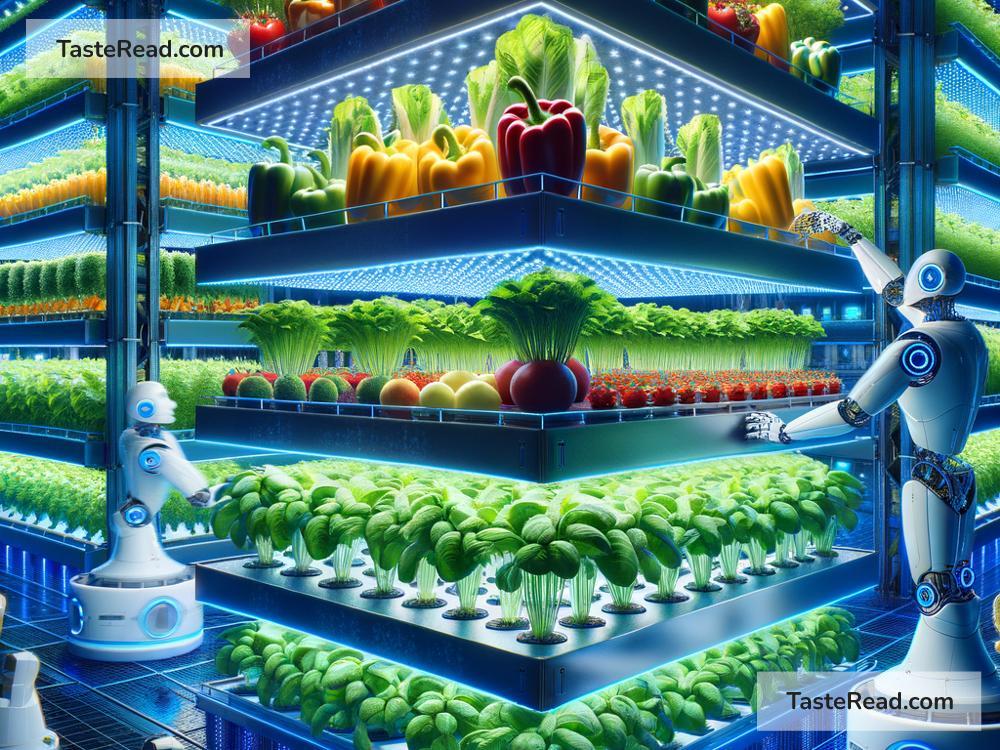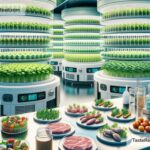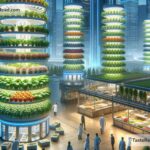The Future of Food: Global Solutions for Feeding the World
Food is one of the most basic needs of humans, yet millions of people across the world still struggle to get enough to eat. At the same time, farming faces huge challenges like climate change, limited land, and resource shortages. With the global population expected to reach almost 10 billion by 2050, the big question is: How can we produce enough food to feed everyone sustainably? The answer lies in systemic global solutions—approaches that look at the big picture to solve problems for everyone, everywhere.
In this article, we’ll explore key ideas shaping the future of food. We’ll focus on innovative technologies, smarter farming practices, reducing food waste, and making systems fairer. While the topic is complex, the goal is clear: creating a sustainable food system that meets the needs of both people and the planet.
The Problems We Face
Before we talk about solutions, let’s take a closer look at the problems. First, farming uses a lot of natural resources, like water and soil. If we over-farm or pollute these resources, it becomes harder to grow food. Second, climate change causes unpredictable weather, droughts, floods, and other challenges, making it harder for farmers to plan. Third, food inequality is a huge issue—some people have more food than they need, while others don’t have enough to survive.
A fourth problem is food waste. According to the United Nations, about one-third of the food produced globally gets wasted. This happens for many reasons, such as poor storage or overbuying. Wasted food also means wasted resources—water, energy, and labor—that went into producing it.
These challenges show why we need innovations and global cooperation to secure our food future. Let’s look at some solutions.
Smarter Farming with Technology
One big solution comes from technology. Farmers today have access to tools like drones, sensors, and AI (artificial intelligence) to make farming more efficient. These “smart farming” techniques help farmers monitor soil conditions, water levels, and crop health in real time. By understanding exactly what crops need, farmers can reduce waste and grow more food with fewer resources.
Another exciting possibility is vertical farming. Unlike traditional farming, vertical farms grow crops in stacked layers inside controlled environments, like warehouses. This method uses less land and water, while producing fresh food year-round. It’s especially useful for cities, where space is limited but the demand for food is high.
Additionally, scientists are working on “lab-grown” foods. They’ve developed ways to grow meat, dairy, and even fish in laboratories without raising animals. These foods could reduce the environmental damage caused by traditional farming while offering protein-rich options that the world needs.
Supporting Sustainable Practices
While technology is a powerful tool, it’s not the only answer. Farmers need support to adopt sustainable practices that protect the environment and grow food responsibly. For example, regenerative farming focuses on improving soil health by rotating crops, planting cover crops, and using natural fertilizers. Healthy soil absorbs carbon, fights climate change, and produces better yields over time.
Agroforestry is another promising practice. This method combines trees with crops, allowing farmers to grow food and protect forests at the same time. Trees provide shade, prevent erosion, and offer additional income through fruits or nuts. Such practices balance food production with environmental protection.
Governments, businesses, and consumers can support these efforts by providing funding, training, and fair prices. When farmers feel financially secure, they’re more likely to adopt eco-friendly methods.
Reducing Food Waste
Food waste is a global issue, but the solutions are surprisingly simple. At home, people can plan meals better, store food properly, and share extra food with others instead of throwing it away. Restaurants and grocery stores can donate unused food or turn leftovers into compost rather than letting it go to landfills.
Technology also helps here. Apps and platforms like Too Good To Go connect businesses with people who want to buy surplus food at lower prices. These initiatives save food, money, and the environment.
Governments can pass laws encouraging food redistribution or banning excessive waste. For example, some countries require supermarkets to donate unsold food to charities. Such policies ensure that edible food reaches those who need it most.
Making Food Systems Fairer
Finally, the future of food depends on fairness. Today, there are big gaps in who has access to food. Rich countries often have plenty, while poorer ones face shortages. Global efforts need to focus on helping every region grow its own food or access imports affordably.
Education also plays a key role. When people understand nutrition and farming basics, they’re better equipped to make informed choices. Schools, governments, and nonprofits can work together to teach communities about growing food and staying healthy.
Equal access to new technologies is crucial as well. If wealthier countries adopt advanced farming methods while poorer ones can’t afford them, the gap will grow even wider. Sharing knowledge, funding, and resources globally is essential for building fairness into the food system.
A Better Food Future Is Possible
The future of food is full of challenges, but also opportunities. Smart farming technologies, sustainable practices, reducing waste, and ensuring fairness are key ingredients for success. However, these solutions can’t happen in isolation—governments, businesses, scientists, and individuals must all work together to design a better food system.
While big changes will take time, small actions make a difference every day. Supporting local farmers, eating sustainably, and wasting less food are steps anyone can take to contribute to the solution. Together, we can create a food system that feeds everyone, protects the planet, and supports future generations.
The future of food doesn’t have to be grim—it can be full of innovation, collaboration, and hope. Let’s get to work to make it happen!


